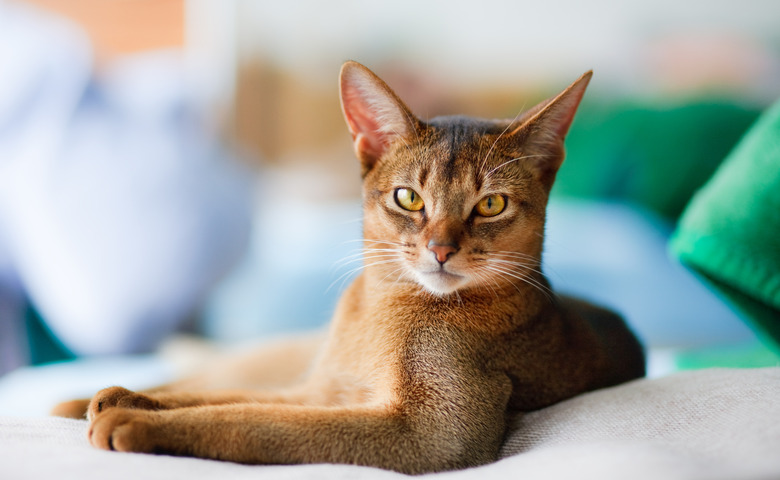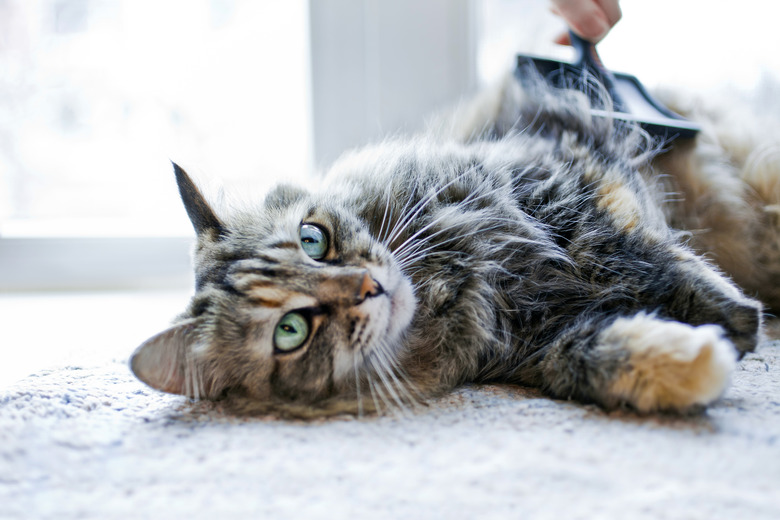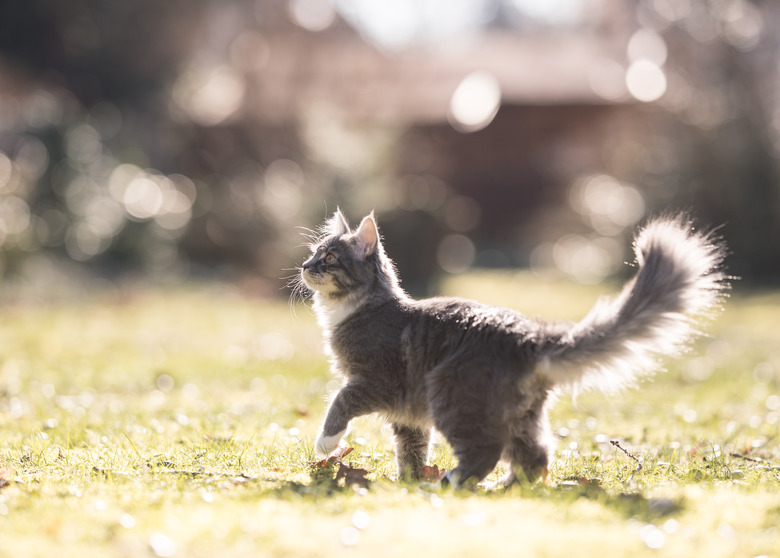Will A House Cat Grow His Hair Back If Shaved?
Are you wondering if you shave a cat will the hair grow back the same color — or at all? Relax, cat fur does indeed regrow, whether you have him fully shaved or you get your feline a specialized lion cut. For long-haired cats, it can take four to six months for the fur to regain its former style. But if you shave a short-haired kitty, his hair should grow back in less than three months. Certain factors influence hair growth, including breed, so determine what's normal for your kitty or check in with your pet's vet.
But before you reach for a razor or clippers, keep in mind that shaving your cat may not be necessary and could even cause harm. Here's the skinny on shaving a cat's coat.
Learn fur's purpose
Learn fur's purpose
It seems obvious that your cat's coat is supposed to keep him warm when the temperatures dip low, but feline fur was also designed to protect from hot weather too. A cat's coat is actually made up of layers that act as a kind of insulation for the animal — and if too much of the fur is cut or shaved away, your pet will lose the cooling benefits its coat can provide.
Brush your cat regularly
Brush your cat regularly
Before leaping to clip or even shave a cat's fur, make sure that you've got a brushing routine nailed down. This type of regular grooming can sweep away dirt, debris, and loose hair as well as move natural oils from your cat's skin onto his fur, leaving it with a healthy, shiny appearance. Regular brushing will also stave off the formation of mats and tangles, though if your cat does develop a knot, you may be able to carefully cut it free. For more severe tangles, seek help from a professional groomer or vet.
Consider a short trim
Consider a short trim
Is the weather pretty sticky in your neck of the woods? It's fine to give your long-haired cat a summer haircut if you think it would make him more comfortable. As mentioned, cats are able to adapt to all kinds of weather in the coat they're born in, but because long-haired cats tend to develop mats in their hair and may not sit still for extended sessions with a brush, a short trim may be in order. Your best bet: don't try and shave your cat's fur to skin level — let a pro groomer take on this task.
Prepare for new texture
Prepare for new texture
In some cases, after having your cat's fur shaved, the new hair might have a different texture than his old coat. It might be thinner or thicker than it used to be and the color may be slightly different too. Know that it's critical to leave at least an inch of fur behind when shaving because too-short hair exposes your cat's skin to the sun, risking damage and burning. And when hair is shaved too short, it can become embedded, causing pain, irritation, and hairless patches.
Become a fur expert
Become a fur expert
On the whole, it's a good idea to get to know your pet's fur, from her whiskers to the tip of her tail. By becoming familiar with it, you'll be able to tell the difference between healthy hair and hair that's developing a potential problem. A dull, greasy coat of fur, particularly on an elderly cat, could indicate that he's unable to self-clean his body due to aches and pain brought on by arthritis. And the same lifeless coat on an overweight cat may mean he has trouble reaching certain areas of his body due to excess pounds. Speak with your veterinarian if you spot one of these issues.


